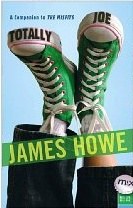

具体描述
In this book - a landmark text that is both engaging and accessible - Hilary Janks addresses the following questions and many more: Is literacy a skill or a social practice? In what ways is literacy embodied? Do texts have designs on us and what can we do about it? How does language construct reality? What is 'linguistic capital' and who has it? Who gets access to new literacies and who is excluded? How is literacy implicated in relations of power and questions of identity in our daily lives? Janks shows how competing orientations to critical literacy education - domination (power), access, diversity, design - foreground one over the other. Her central argument is that these different orientations are crucially interdependent and need to work together to create possibilities for redesign and social action that serve a social justice agenda. Recognizing ongoing change in socio-historical conditions, in the communication landscape, and in the applications of critical literacy, she examines the theory underpinning each orientation, and develops new theory in the argument for interdependence and integration. Most important, "Literacy and Power" sits at the interface between theory and practice, constantly moving from one to the other. It is rich with examples of how to use these orientations in real teaching contexts, and how to use them to counterbalance one another. In the groundbreaking final chapter, Janks shows ways of working 'beyond reason'. Considering how the rationalist underpinning of critical literacy tends to exclude the non-rational - pleasure and play, desire and the unconscious - she makes the case that these need to be taken seriously given their power to cut across the work of critical literacy educators working from any orientation.
作者简介
目录信息
读后感
评分
评分
评分
评分
用户评价
相关图书
本站所有内容均为互联网搜索引擎提供的公开搜索信息,本站不存储任何数据与内容,任何内容与数据均与本站无关,如有需要请联系相关搜索引擎包括但不限于百度,google,bing,sogou 等
© 2025 book.quotespace.org All Rights Reserved. 小美书屋 版权所有




















